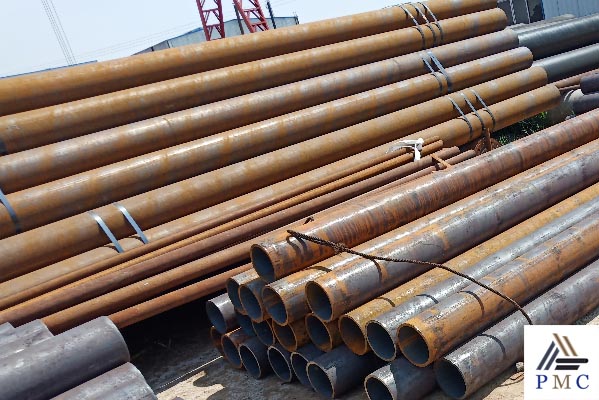
Commonly Used Rust Removal Method for Seamless Steel Tubes
The surface treatment of seamless steel pipe affects the life of the anti-corrosion layer by about 50%. Therefore, whether it is seamless tubes or welded pipes shall be strictly in accordance with the requirements of the anti-corrosion layer specification on the surface of steel pipes, and the surface treatment methods of steel pipes shall be continuously improved. The main methods of seamless steel pipe de-embedding are as follows:
1. Cleaning
Solvents and emulsions are used to clean the surface of steel to remove oil, grease, dust, lubricants and similar organic matter. However, it does not remove rust, scale, flux, etc. from the surface of the steel. Therefore, it is only used as an auxiliary means in the defense operation.

2. Pickling
Generally, chemical cleaning and electrolysis are used for pickling treatment. Pipeline anti-corrosion is only chemical pickling, which can remove scale, rust and old coating, and can sometimes be used as re-treatment after sandblasting and rust removal. Although chemical cleaning can achieve a certain degree of cleanliness and roughness, its anchor pattern is shallow and it is easy to cause pollution to the surrounding environment.
3. Tool rust removal
The surface of the steel is mainly polished by using a wire brush or the like to remove loose scale, rust, welding slag, and the like. The rust removal of the hand tool can reach the Sa2 level, and the rust removal of the power tool can reach the Sa3 level. If the surface of the steel is adhered to the iron oxide scale, the rust removal effect of the tool is not ideal, and the anchor depth required for the anti-corrosion construction cannot be achieved.
4. Spray derusting
Jet rust removal is a high-speed motor that drives the jet blades to rotate at a high speed, so that the steel balls, steel sand, wire segments, minerals and other abrasives are sprayed on the surface of the seamless steel tube under the strong centrifugal force of the motor, which can not only completely remove the oxides. , rust and dirt, and seamless steel pipe can achieve the required uniform roughness under the action of abrasive violent impact and friction.After the spray derusting, not only the physical adsorption of the surface of the pipe can be enlarged, but also the mechanical adhesion of the anti-corrosion layer to the surface of the pipe can be enhanced. Therefore, jet descaling is an ideal way to remove corrosion from pipelines. In general, shot blasting is mainly used for the inner surface treatment of pipes, and shot blasting is mainly used for the outer surface treatment of seamless steel pipes.


